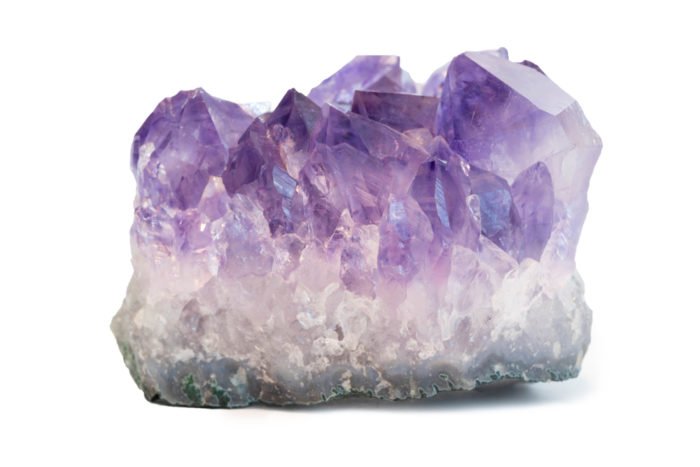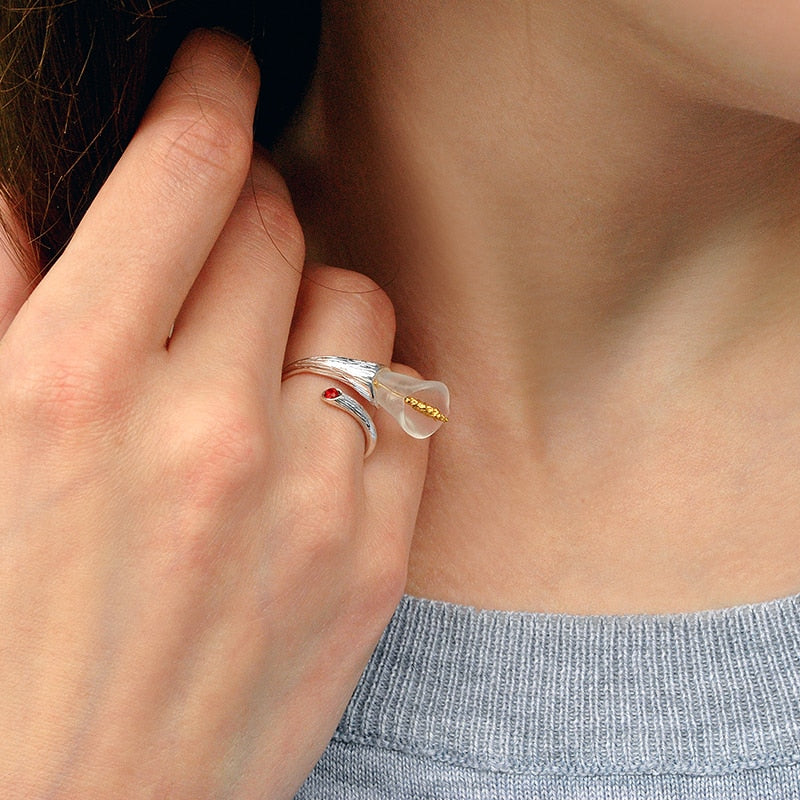If this beautiful stone has been called that, it is above all for its color which varies between mauve and purple and which recalls the color of wine cut with water. By extension, amethyst has acquired a reputation for protecting against drunkenness.
Amethyst belongs to the quartz family, its crystalline system is trigonal and its transparency ranges from diaphanous to translucent. It owes its purplish color to the presence of iron and its hardness is 7 on the Mohs scale.
Today amethyst has become a fairly common stone thanks to the abundant deposits discovered around the world, including France, Belgium, Canada, Madagascar, Brazil, Uruguay and others.

History of the amethyst
Ancient civilizations placed a very high value on amethyst. From the Egyptians to the Romans, the Greeks and the Jews to name but a few, great civilizations have revered the amethyst. This stone has been present in several myths and ancient legends that attribute extraordinary powers to a stone created or even colored by the gods.
Present in the jewels and pendants of the pharaohs, amethyst seems to have fascinated the ancient Greeks to the point of being the subject of a famous myth that tells the genesis of this stone. Legend has it that Dionysus, the Greek god of wine, mad with rage against humans, swore revenge against the first human who had the misfortune to meet him, for the great misfortune of a young girl named Amethyst who had to suffer the wrath of the God.
Begging Artemis to remove her from her cruel fate, the goddess responded to the girl's pleas by transforming her into a white quartz statue. Once his fury subsided, Dionysus repented of his cruel fury and, as a sign of repentance, poured wine on the crystal, which took on a purplish color.
Greeks and Romans believed in the virtues of amethyst against drunkenness, which would explain the fact that they placed their bowls with this stone. The Jews considered the amethyst to be the symbol of the Ahlamah tribe. And he considered it one of the stones of the gates of Jerusalem.
In the Middle Ages, the amethyst was adopted by the Catholic Church as a symbol of chastity and renunciation of earthly temptations. Amethyst also boasts a special attraction for the monarchs of Europe. The scepter of the Queen of England, for example, is set with an amethyst globe.

Advantages of amethyst
Amethyst confers undeniable benefits for the health of the body and mind. The healing properties of amethyst are quite numerous. Very useful for skin problems, it will help treat acne and other skin pustules or lesions. The amethyst stone has calming virtues against migraines and other disorders related to the nervous system.
As a setting stone, amethyst will also help to regain serene breathing and smoother and more balanced blood circulation. Problems with stress, anxiety, nervous and muscular hypertension, and depressive states tend to resolve quite quickly when you keep an amethyst stone nearby. Amethyst also promotes sleep and ensures dreams purified from the negative vibrations responsible for nightmares and other sleep disorders.
On a spiritual level, amethyst is considered the stone of wisdom and is a powerful link with the divine. These properties help purify the atmosphere around the wearer thanks to the powerful energy field that the amethyst generates.
Adepts of meditation will find in this stone an ally to open the mind, broaden the field of perception and promote spiritual elevation. Amethyst helps you become more receptive to vibrations and messages, both internal and external.
Amethyst is associated with the seventh chakra or crown chakra located at the top of the skull, this chakra is the origin of spiritual openness and empathic and altruistic connection with others.
The stone is associated with the signs of Virgo, Sagittarius, Aquarius and Pisces. Its planets are Neptune and Jupiter, its water element.
The purification and recharge of the amethyst takes place by immersing the stone for a few hours away from light in demineralized and slightly salted water.









